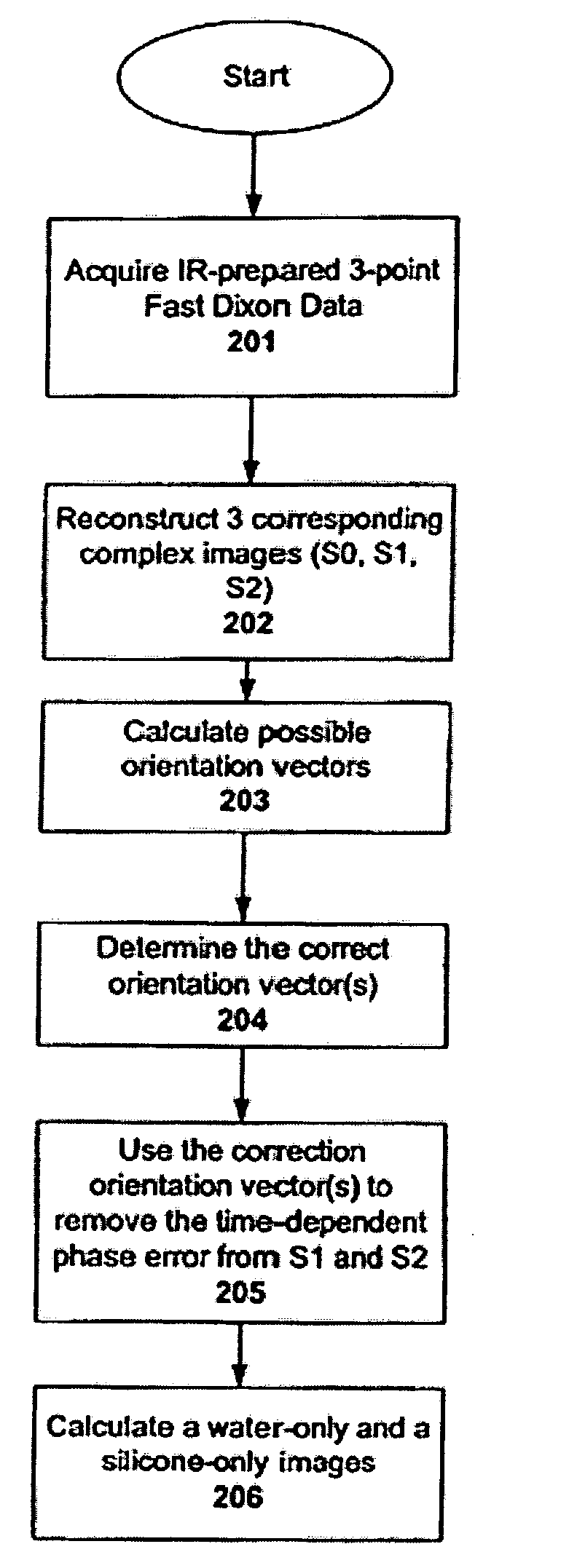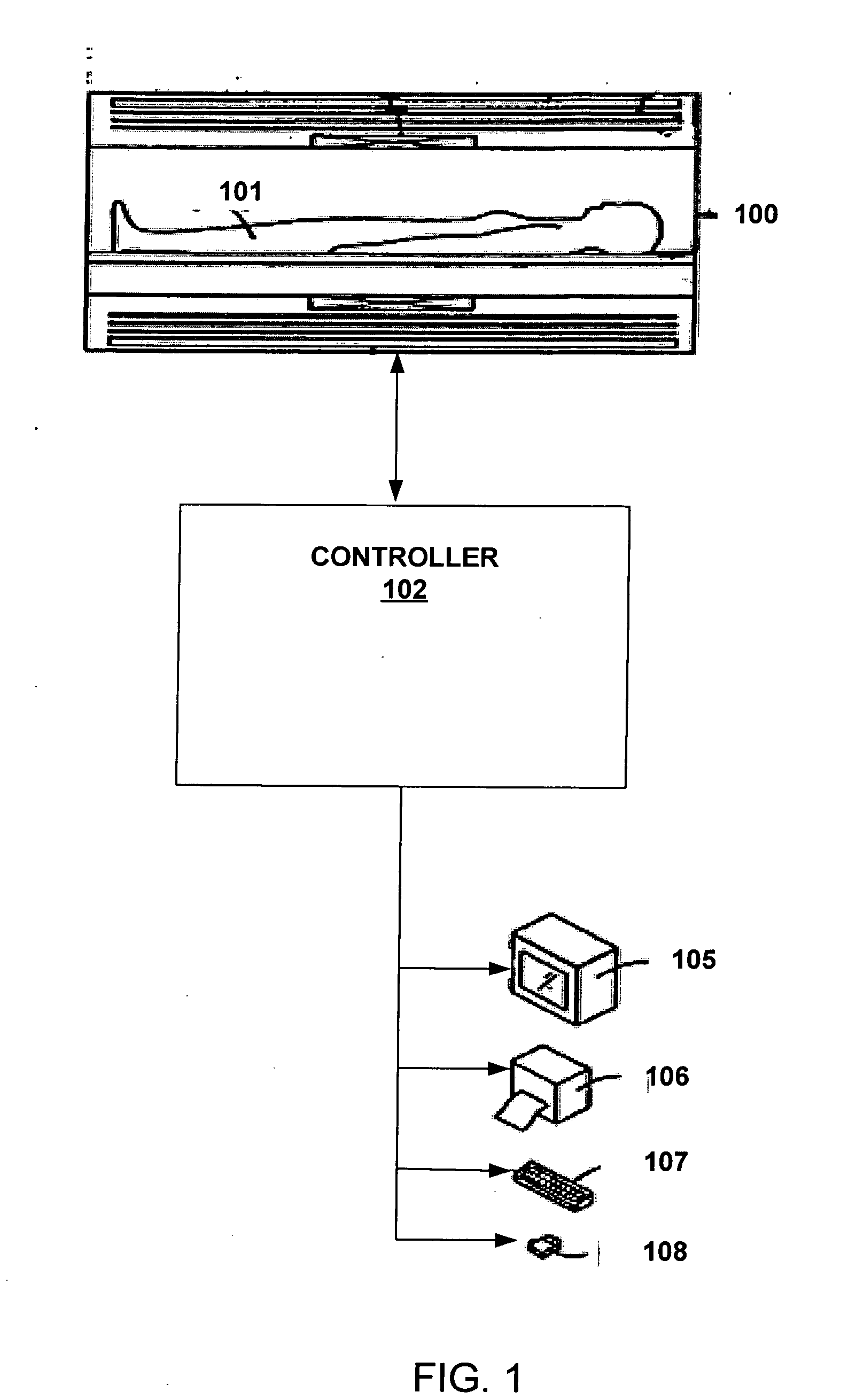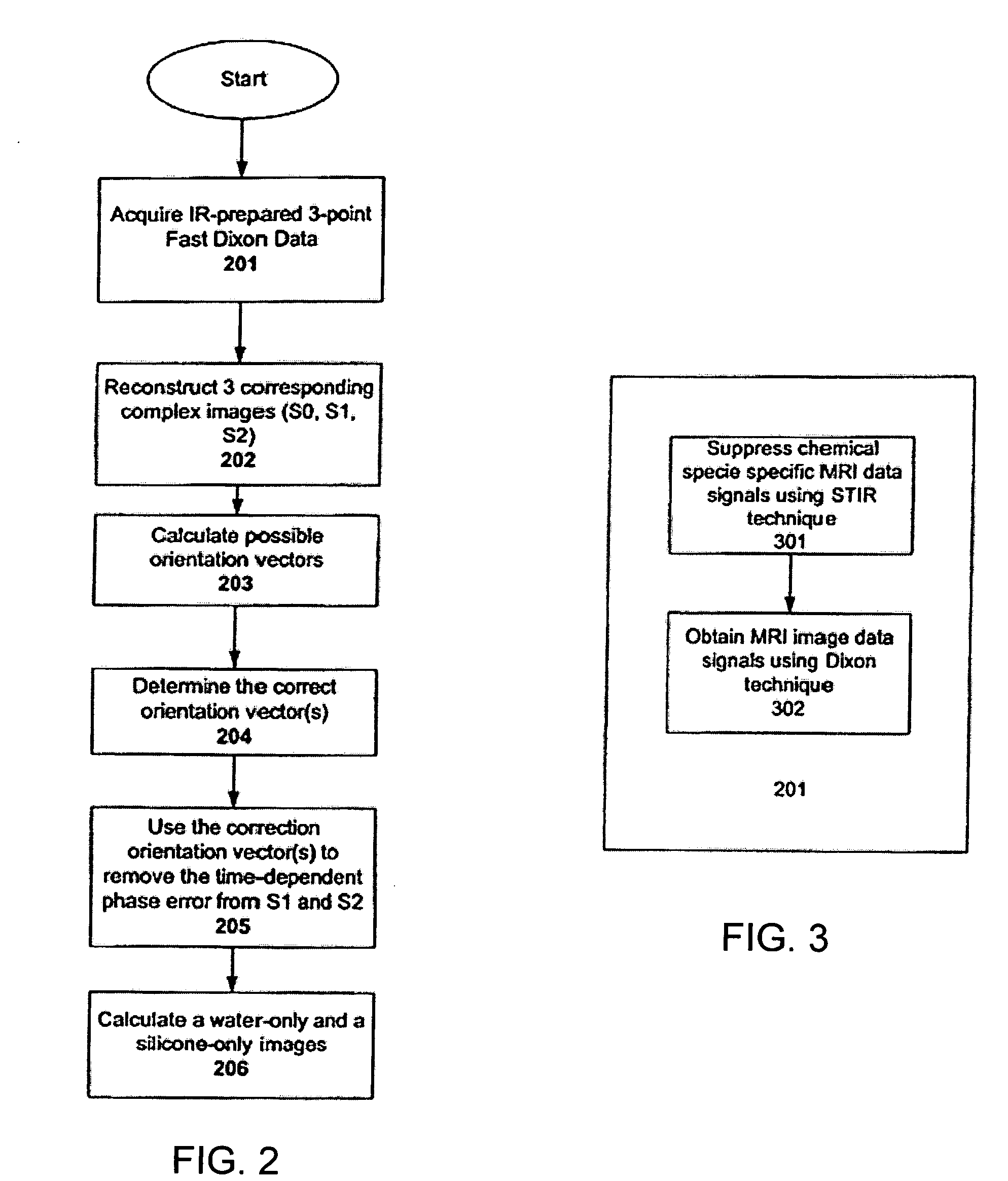Methods and apparatuses for fast chemical shift magnetic resonance imaging
a magnetic resonance imaging and chemical shift technology, applied in the field of medical imaging, can solve the problems of increasing the total scan time, affecting the image quality, and achieving the effect of image quality
- Summary
- Abstract
- Description
- Claims
- Application Information
AI Technical Summary
Benefits of technology
Problems solved by technology
Method used
Image
Examples
examples
[0066] The following examples are included to demonstrate specific embodiments of this disclosure. It should be appreciated by those of skill in the art that the techniques disclosed in the examples that follow represent techniques discovered by the inventors to function well in the practice of the invention, and thus can be considered to constitute specific modes for its practice. However, those of skill in the art should, in light of the present disclosure, appreciate that many changes can be made in the specific embodiments which are disclosed and still obtain a like or similar result without departing from the spirit and scope of the invention.
[0067] In one implementation of an embodiment of the invention, before the acquisition of the Dixon data, the frequency separation between water and silicone in a phantom was measured to be 240 Hz, in comparison to 215 Hz for the separation between water and fat. These values were used to determine the areas of the bipolar gradients used ...
PUM
 Login to View More
Login to View More Abstract
Description
Claims
Application Information
 Login to View More
Login to View More - R&D
- Intellectual Property
- Life Sciences
- Materials
- Tech Scout
- Unparalleled Data Quality
- Higher Quality Content
- 60% Fewer Hallucinations
Browse by: Latest US Patents, China's latest patents, Technical Efficacy Thesaurus, Application Domain, Technology Topic, Popular Technical Reports.
© 2025 PatSnap. All rights reserved.Legal|Privacy policy|Modern Slavery Act Transparency Statement|Sitemap|About US| Contact US: help@patsnap.com



